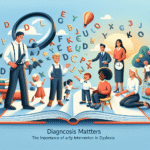
Introduction: The Power of Memory
Imagine landing a new job after an intense and competitive interview process. The first thing you do is recall your past experiences—those moments when you prepared for such interviews, practiced your responses, and perhaps even stumbled in previous attempts. Memory is woven into the very fabric of our lives, guiding our decisions and shaping our identities. But how does this process work? In this article, we will explore From Experience to Recall: Understanding the Journey of Memory Formation, shedding light on the intricate mechanisms that turn fleeting moments into lasting memories and the significance of this journey in our daily lives.
The Anatomy of Memory
To grasp the concept of memory formation, we must first understand its structure. Memory can be broadly categorized into three types: sensory memory, short-term memory, and long-term memory. Each of these plays a critical role in the journey of memory formation.
1. Sensory Memory: The First Impression
Sensory memory acts as a filter, capturing the sensory experiences from our environment for a brief moment. For instance, when you savor a fragrant meal, the smell is momentarily stored in your sensory memory. It lasts only a few seconds but serves as a prerequisite for deeper processing.
Case Study: The Stroop Effect
The Stroop Effect demonstrates sensory memory’s quick processing capabilities. Participants shown color words (e.g., "red" in blue ink) struggle to name the ink color, revealing a clash between sensory input and cognitive processing. This showcases the fleeting nature of sensory memory and its role in immediate recall.
2. Short-Term Memory: The Playground of Current Thoughts
Short-term memory retains information for about 15 to 30 seconds. It’s like a mental scratchpad where we store and manipulate information momentarily. This is where our experiences begin to coalesce before solidifying into long-term memory.
Case Study: Miller’s Law
Psychologist George A. Miller proposed that short-term memory can hold about seven items, plus or minus two. Understanding this limitation aids in organizing information effectively for better recall, e.g., using mnemonic devices.
3. Long-Term Memory: The Library of Your Life
Long-term memory is where experiences are stored for extended periods—potentially a lifetime. It consists of explicit memory, which is conscious and includes facts and experiences, and implicit memory, which is unconscious and pertains to skills and habits.
Case Study: The Case of Clive Wearing
Clive Wearing, a British musician, lost much of his memory due to viral encephalitis. Despite this damage to his short-term memory, he retains a rich musical ability, evidencing the resilience of long-term memory and its categorization.
Table: Types of Memory and Their Characteristics
| Type of Memory | Duration | Capacity | Example |
|---|---|---|---|
| Sensory Memory | < 1 second | High | A fleeting visual image |
| Short-Term Memory | 15-30 seconds | 7±2 items | Remembering a phone number |
| Long-Term Memory | Infinite | Unlimited | Childhood memories |
The Process of Memory Formation
Understanding From Experience to Recall: Understanding the Journey of Memory Formation requires us to delve deeper into how experiences transition into memories. The process can be broken down into three crucial stages: encoding, storage, and retrieval.
1. Encoding: The Art of Transformation
Encoding transforms sensory input into a form that can be stored in memory. This can be automatic, as in the case of routine experiences, or effortful, such as studying for an exam.
- Strategies for Effective Encoding:
- Elaborative Rehearsal: Connecting new information to existing knowledge enhances memory.
- Chunking: Breaking information into smaller segments makes it easier to remember.
Case Study: The Ebbinghaus Forgetting Curve
Hermann Ebbinghaus famously illustrated how quickly we forget information, showing that retention significantly decreases within hours of learning. Using effective encoding strategies can combat this forgetting curve.
2. Storage: Preserving the Experience
Once encoded, memories need to be stored for future use. Long-term storage can be further categorized into declarative memory (facts and events) and procedural memory (skills and actions).
Case Study: The Role of Sleep in Memory Storage
Research indicates that sleep significantly aids memory storage. A study demonstrated that participants who napped after learning a new task performed better in recall tests than those who stayed awake.
3. Retrieval: The Gateway to Recall
Retrieval is the process of accessing stored memories. Effective retrieval depends on how well memories were encoded and stored.
- Types of Retrieval:
- Recall: Accessing information without cues (e.g., essays).
- Recognition: Identifying information when seeing it again (e.g., multiple-choice questions).
Case Study: The Testing Effect
Studies show that retrieval practice enhances long-term retention. When students are tested on information they learned, they perform better in the long run compared to those who simply restudy the same material.
The Role of Emotion in Memory Formation
Emotions significantly impact memory formation, adding layers of complexity to the journey from experience to recall. Emotional experiences are often remembered more vividly due to the activation of the amygdala, which interacts with the hippocampus—central to memory processing.
Emotional Memories: A Double-Edged Sword
While emotional events can enhance recall, they can also distort memories. For example, vivid memories of a traumatic event may be colored by anxiety or fear, leading to inaccuracies in recall.
Case Study: The Challenger Disaster
In a study of individuals’ recollections of the Challenger shuttle disaster, researchers found that many details were inaccurately remembered yet felt as if they were correct. This underscores the paradox of emotional memory; strong feelings may lead to confidence in incorrect details.
Table: The Influence of Emotion on Memory
| Emotion | Impact on Memory |
|---|---|
| Happiness | Enhances recall of positive events |
| Fear | Can distort details of traumatic events |
| Sadness | May lead to focused recall of negative experiences |
Practical Applications of Understanding Memory
Armed with insights into From Experience to Recall: Understanding the Journey of Memory Formation, we can apply this knowledge across various fields, enhancing both personal and professional lives.
Education: Improving Learning and Retention
Educators can leverage memory formation principles to improve learning outcomes. Techniques such as spaced repetition and active recall not only promote deeper learning but also make the retrieval process more effective.
- Active Learning Strategies:
- Group discussions
- Peer teaching
- Interactive simulations
Workplace: Enhancing Performance
In the workplace, understanding memory can lead to better training programs. Incorporating storytelling and emotional elements into training can help employees retain information.
Case Study: The Leadership Program at Google
Google’s leadership program emphasizes real-world scenarios and emotional connections to facilitate learning, which has led to significant enhancements in employee engagement and knowledge retention.
Personal Growth: Managing Memories Effectively
On a personal level, being proactive about memory can be empowering. Practicing mindfulness and reflecting on experiences can lead to better emotional regulation and memory recall.
Conclusion: The Power of Memory Journey
In unraveling From Experience to Recall: Understanding the Journey of Memory Formation, we have navigated through the multifaceted nature of memory. From the fleeting impressions of sensory memory to the vast archives of long-term memory, our experiences are rich tapestries woven over time.
The takeaway is clear: by understanding how memory works, we can enhance our learning, improve our emotional well-being, and foster better relationships with ourselves and others. As we journey through life, let’s choose to observe, reflect, and remember—transforming our experiences into lasting memories.
FAQs (Frequently Asked Questions)
1. How can I improve my memory recall?
Incorporate techniques like spaced repetition, active recall, and mnemonic devices into your study routine to enhance memory retrieval.
2. How does sleep affect memory formation?
Sleep plays a crucial role in memory consolidation, helping to transfer information from short-term to long-term memory.
3. Can emotions distort memories?
Yes, emotional experiences can enhance the vividness of memories but may also lead to inaccuracies, particularly in traumatic situations.
4. What is the difference between recall and recognition?
Recall is retrieving information without cues, while recognition involves identifying previously encountered information when presented with it again.
5. How does age affect memory formation?
As we age, memory formation can be affected by changes in brain structure and function, often resulting in slowed encoding and retrieval processes.
By understanding these dynamics of memory, we can embark on our own journey of transformation and resilience—making our experiences count.












